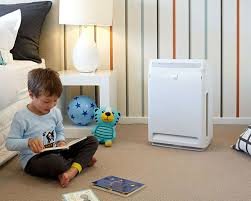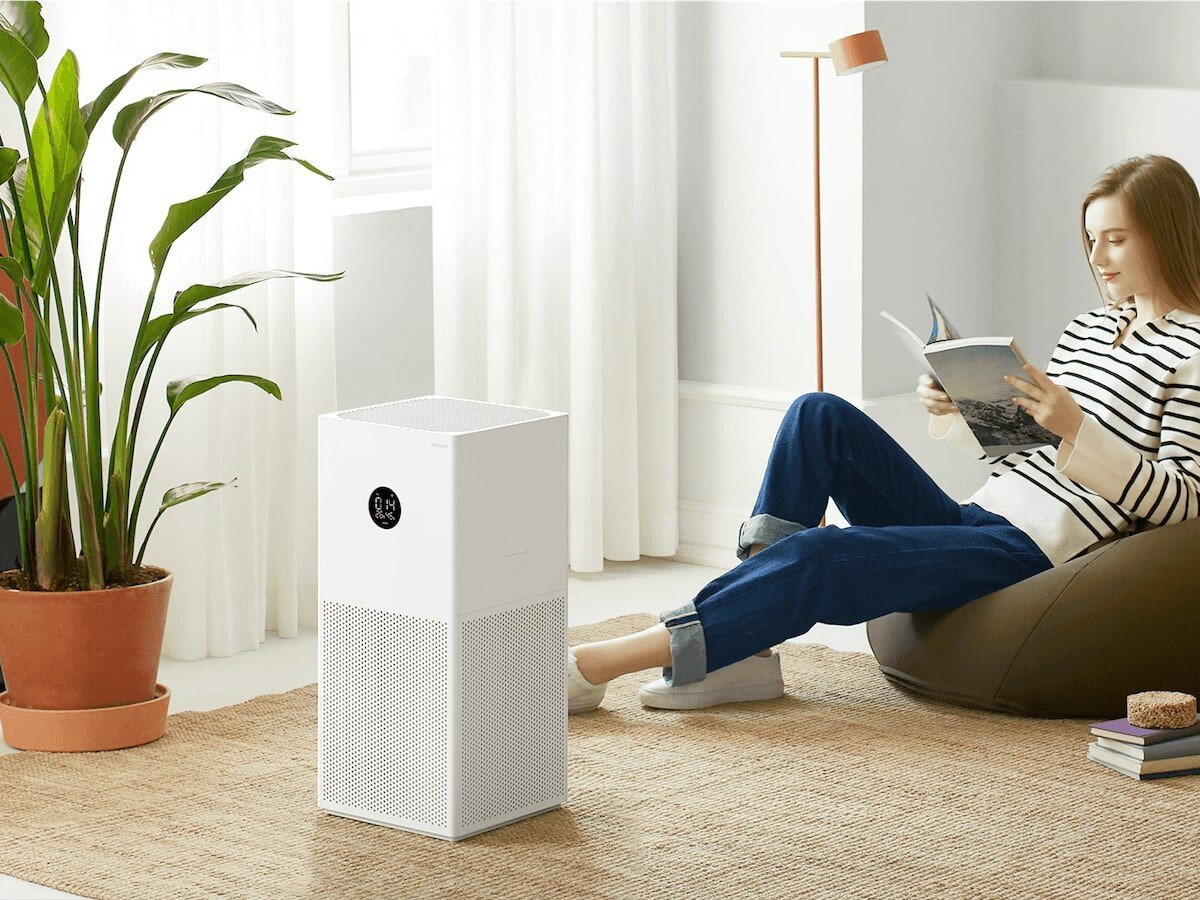An increase in air contaminants such as pollen, dust, mold, smoke, and pet dander in your house can have a negative impact on the quality of your indoor air. If you struggle with allergies or you have asthma condition, you will even have a more difficult time living in such a contaminated environment. Luckily, you can get yourself an air purifier device to help you improve the quality of your indoor air as you think of the best strategy that you can use to reduce or eliminate these prevalent air pollutants. But how does an air purifier work?
Table of Contents
In this guide, we are going to look at how an air purifier works and the different types of air purifiers available in the market that one can use to clean the air to improve indoor air quality.
What is an air purifier?
An air purifier is a device that is fitted with a powerful fan that draws air inside and one or more air filters to trap common airborne pollutants such as pollen, dust, chemical fumes, odors, and pet dander thus, making the indoor air cleaner. There are different types of air purifiers but the most commonly used air purifiers in a home or office setup are portable and whole-house air purifiers.
How does an air purifier work?
Before making a buying decision, one of the common questions that will linger in your mind is; how do air purifiers work? Well, different types of air purifiers use different air filtration systems. However, for most common types of air purifiers, a fan will draw the polluted air inside the machine where air filters will trap the air contaminants and harmful bacteria and then re-circulate the clean air back to your room.
Some air purifiers are capable of trapping the majority of air pollutants and allergens while others capture less depending on their functionality. For instance, a True HEPA air filter can trap airborne particles as small as 0.3 microns.
The more efficient an air purifier is, the better the chances of improving your indoor air quality.
What is a micron?
A micron also referred to as a micrometer is a one-millionth of a meter. Each micron represents 1/25,000th of an inch and it’s the SI unit that is used to measure the size of airborne particles. Most airborne pollutant particles are microscopic and not visible to the naked eye.
Most room air conditioner filters can only capture airborne particles that are 10.0 microns or larger therefore, making them less effective compared to air purifier filters when it comes to improving the quality of your indoor air.
Do air purifiers work?
One of the common questions people ask regarding air purifiers is; do air purifiers really work? The correct and straightforward answer is YES they do work. Air purifiers are effective in improving indoor air although different types of air purifiers have different capabilities.
In a summary, the effectiveness of an air purifier depends on several factors such as;
- The size of the room you are trying to clean the air
- The type of air pollutants in your home
- The type of ventilation system in your home
- The number and type of air filters that your air purifier uses
- Air purifier use frequency
- The CADR rating of your air purifier device
- Your house cleaning strategy and frequency
- How effective are the measures that you have put in place to control the source of your indoor air contamination
For the best and most sustainable way of improving your indoor air quality, the U.S. Environmental Protection Agency recommends that you focus more on reducing or eliminating the source of indoor air pollutants that are prevalent in your home.
When you keep the source of airborne pollutants at minimal levels, you will get better results in improving your indoor air quality irrespective of the type of air purifier that you use.
How do different types of air purifiers work?
There are different types of air purifiers in the market that are fitted with different types of air purification filters. An air purifier device can use either one or multiple types of air filters. The most common types of air filters used in most air purifier devices include;
True HEPA air filters
True (High-Efficiency Particulate Air) HEPA Air filters are the most popular air filters used in many air purifier brands as they can trap very fine airborne pollutants that are as small as 0.3 microns in size such as dust particles, mold, pollen, some bacteria and viruses, pet dander, and other tiny allergens.

Most True HEPA Air filters are made of foam, cotton, or even fine mesh. Every HEPA filter has a MERV Rating (Minimum Efficiency Reporting Value). The MERV rating indicates a filter’s ability to capture common air pollutant particles that are between 0.3 to 10 microns.
The higher the MERV Rating, the higher the ability of the air filter to trap small airborne particles.
For True HEPA Air filters, most of them will have a MERV Rating of 7 to 13 which makes them more effective in cleaning indoor air as they can trap the most common air pollutants.
Activated carbon filters
Activated carbon filters have high porosity and use a combination of multiple air purification technologies to trap airborne pollutants as the air passes through the air purifier device. Activated carbon air filters are ideal for trapping VOCs, gases, smoke, pet odors, and chemicals.
Ionizers
They use electrostatic plate precipitates and they work by giving a negative charge to incoming oxygen atoms in your indoor air so that it can become charged and heavy making it possible to be trapped in the electrostatic plate or drop down on the ground or other surfaces.
Ozone air purifiers
Ozone generators work by generating ozone which helps remove impurities from your indoor air. However, for ozone generators to be effective, they need to release high ozone levels and this can cause some harmful health complications.
UV light air purifiers
Ultra-Violent light air purifiers rely on UV light to penetrate the cell of microorganisms once the air is drawn into the machine. This technology is often combined with other air purification technologies such as HEPA Air Filter which draws the air into the air purifier device.
The UV lamp will then disinfect the air killing any microorganisms through the process of germicidal irradiation.

What is a CADR Rating?
A CADR Rating abbreviation in an air purifier device refers to Clean Air Delivery Rate. It’s the rating that measures the air volume in cubic feet per minute that an air purifier can clean. The CADR Rating applies to both fine and large particles of air contaminants.
Each air contaminant such as pollen, dust, pet dander, and smoke among others is tested and given its appropriate CADR Rating in every type of air purifier. For instance, most home air purifiers that are fitted with True HEPA Air filters have higher CADR Ratings of between 240 and 180.
The higher the CADR Rating the more efficient an air purifier is.
Air Purifier FAQs
Who should use an air purifier?
If you live in an area that is prone to environmental air pollution like it’s the case with many urban dwellings across the globe, using an air purifier to improve your indoor air quality is highly recommended. An air purifier is a great device that can help you or any of your family members if you suffer from asthma and allergies.
Do air purifiers use a lot of electricity?
No. For a year, a standard air purifier device can consume an average of 500 kilowatt-hours of electricity. This is the same amount of electricity that a standard computer can consume in your house. If you want to reduce power consumption, you can always reduce the speed of fans that runs inside an air purifier device when you are not at home.
How many hours a day should I run my air purifier?
For better results, you are supposed to keep the air purifiers running 24/7. Cleaning the indoor air is a continuous process and the more you keep your air purifier running, the more effective will it be in improving the quality of your indoor air.
How often should I change the air filter in my air purifier?
If you are using a True HEPA filter, you might be required to change the air filters every 3-6 months. The replacement frequency depends on your usage level, the intensity of airborne contaminants, and the number and size of the air filter. Air filters that require to be replaced more frequently are for air purifiers using electrostatic filters and ozone generators.
Where should you place an air purifier?
You should place an air purifier in a location where there is uninterrupted airflow. An air purifier has an inlet where unclean indoor air is drawn inside the air purifier filters trapping air pollutants and an outlet where the cleaned air is released for circulation.
Avoid placing air purifiers in corners of your room or areas with poor ventilation. If you have identified the source of air pollutants, you can place the air purifier close to such areas or in rooms where you spend most of your time like in bedrooms and sitting rooms.
Can an air purifier help you sleep better?
Although there is no medical evidence that air purifiers have a direct positive impact on improving your health, sleeping in a room with clean air can help you sleep better especially if you suffer from allergies and other related respiratory conditions like asthma.
Therefore, having an air purifier with a HEPA air filter can be a great addition to your bedroom that can improve the quality of your sleep by helping improve your indoor air quality.

